Past Events
Interested in Cotsen events? Sign up for our mailing list.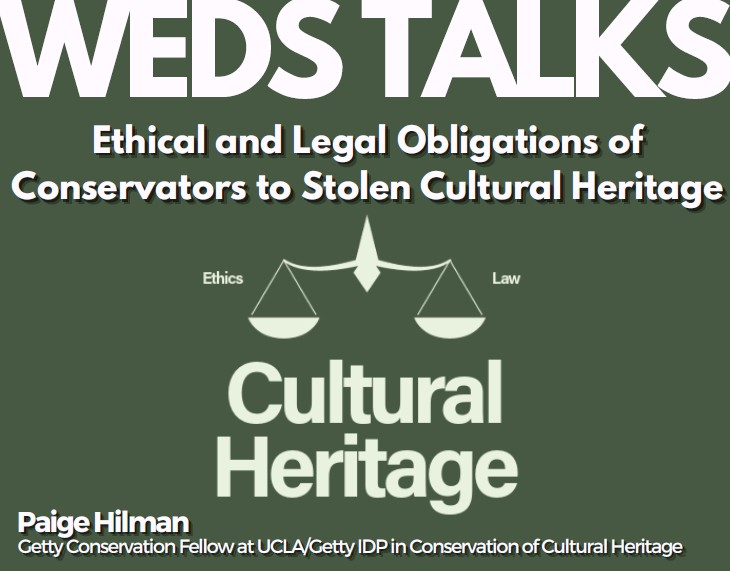
ABSTRACT: Conservators have a responsibility to care for and protect cultural heritage materials. When it comes to the illicit trafficking of cultural heritage materials, there are many opinions throughout conservation about what to do in the case of treatment. As will be discussed, there are formal ethical guidelines for the profession of both conservators and museums. In order to fulfill these professional responsibilities, conservators may be tempted to knowingly treat illicitly trafficked cultural heritage property as a preventative measure. This is done with a genuine hope that one day this cultural heritage will be recovered, and by treating it now, the object has a better chance of surviving to that point. This is also grounded, in part, by the history of unethically but legally acquired cultural heritage in museums that conservators are responsible for caring for. In comparing these ethics with the legal framework within the United States, this talk will explore what, if any, are conservators’ ethical obligations to stolen artifacts and, in practice, what are the legal risks associated with treating a potentially stolen object.
BIO: Paige Hilman received her BA in Art History with a minor in Arts Administration from the University of Arizona and certificate in Field Archaeology from Pima Community College. Prior to starting her MA, she worked with the National Park Service as a Conservation Assistant, serving the Intermountain Region. Her research interests include archaeological ceramics from the American Southwest, provenance research, and conservation ethics.
Contact Sumiji Takahashi
Email sutakahashi@ioa.ucla.edu
Phone 310-825-4169
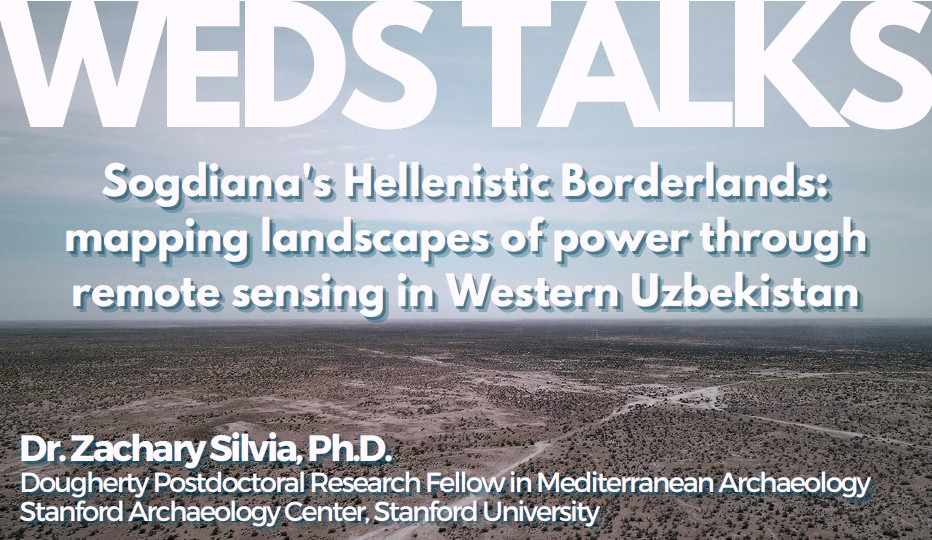
ABSTRACT: This talk presents preliminary results of ongoing archaeological research in the Kyzylkum Desert outside of the Bukhara Oasis in western Uzbekistan. From the mid-1st millennium BCE through 1st c. CE parts of the Kyzylkum desert were a vast agricultural oasis sustained by rivers and substantive canal networks, constituting the westernmost extent of ancient Sogdiana. After the arrival of Greco-Macedonians with Alexander of Macedon western Sogdiana experienced substantial intensification that reached its crux under the archaeologically elusive Kangju empire at the turn of the 1st millennium CE. Then substantial rural areas were rapidly abandoned. Through an ongoing, broad remote sensing survey parts of this vast, now arid agricultural oasis is beginning to emerge. These new data allow us to assess for the first time the broader ecological effects of decision-making in Central Asia’s rural frontiers during the Hellenistic and Post-Hellenistic Periods, and the role these ancient anthropogenic processes played in the formation of the modern Kyzylkum.
BIO: Zach Silvia is a landscape archaeologist focused on the impact of asymmetrical power on ancient culture and ecology in colonial and imperial contexts. At present his work focuses on two geographic contexts: ancient Hellenistic and post-Hellenistic Sogdiana (especially in the Kyzylkum desert around the Bukhara Oasis of Uzbekistan) and late Iron Age and early Roman Istria in Croatia. In both regions he explores the human effects of ecological change on rural communities enduring, appropriating, and resisting various types of colonial systems. He is also a specialist in aerial and terrestrial based remote sensing methods with a strong interest in ethical applications of non-destructive approaches to archaeological fieldwork. Zach received his Ph.D. from Bryn Mawr College in 2022. Zach was a Postdoctoral Researcher in Spatial Archaeometry and Lecturer in the Department of Anthropology at Dartmouth College (2022-23) as well as a Postdoctoral Research Associate with the Joukowsky Institute for Archaeology and the Ancient World at Brown University (2023-25).
Contact Sumiji Takahashi
Email sutakahashi@ioa.ucla.edu
Phone 310-825-4169
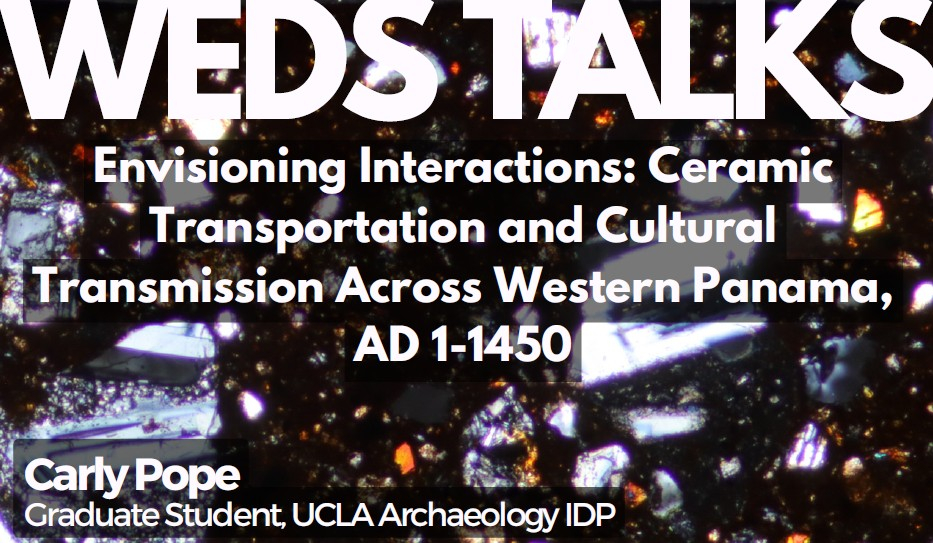
ABSTRACT: The Gran Chiriquí culture area encompasses southern Costa Rica and western Panama, spanning at least three topographic subdivisions: the Pacific Coast, Central Highlands, and the Caribbean Coast. The Caribbean Coast has been the least studied, particularly in comparison to the Pacific Coast. However, from 2003-2014, excavations on Isla Colón, the largest island in Bocas del Toro, Panama, identified multiple sites and recovered large, complex ceramic assemblages that include locally-made pottery, imported wares, and local imitations of exotic styles. Ceramics from several distinct culture areas are evident stylistically, though the cultural processes and community dynamics that resulted in these diverse deposits are still poorly understood. To assess the chronology, scale, and cultural practices that shaped these assemblages, ceramic samples from sites across western Panama have been analyzed using thin section petrography. The identification of distinct paste groups in comparison to pottery styles serves to distinguish possible locations of production, the movement of peoples and goods, and shared visual languages.
BIO: Carly Pope earned her BA in Art and Archaeology from Princeton University in 2016, where her senior thesis focused on the emergence of several early pottery traditions in Latin America. She continued her education at the University College London, where she obtained a MA in Archaeology in 2018. . She specializes in the archaeometric analysis of ceramics including the use of laser ablation inductively coupled plasma mass spectrometry, neutron activation analysis, portable x-ray fluorescence, and petrography. In 2024-25, she held research positions at the Smithsonian Tropical Research Institute, Missouri University Research Reactor Archaeometry Lab, and Georgia State University’s Department of Geosciences.
Contact Sumiji Takahashi
Email sutakahashi@ioa.ucla.edu
Phone 310-825-4169
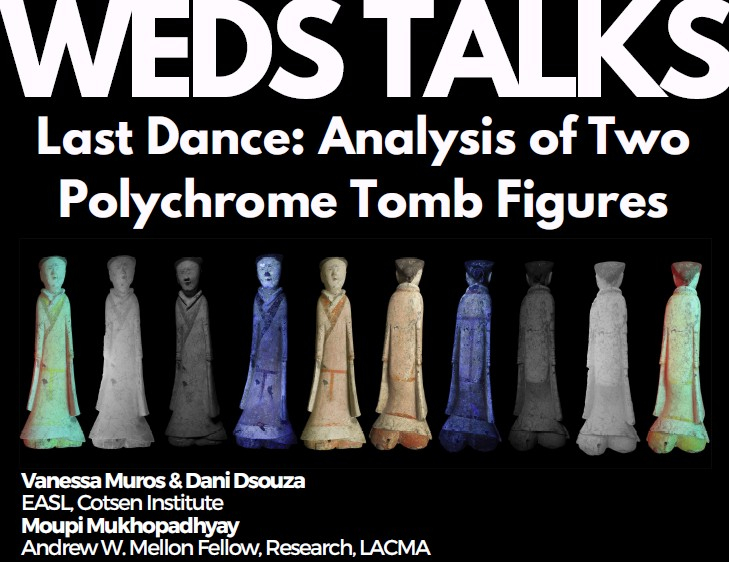
ABSTRACT: This presentation will focus on our technical study of two polychrome ceramic tomb figures of dancers dating to the Han dynasty (206 BCE-8 CE). These figures were temporarily stewarded at the Cotsen Institute as part of the Waystation Initiative and were returned to China in June. The purpose of the study was to identify the pigments used and how they were applied. To answer these questions we combined a series of analytical techniques, such as pXRF spectroscopy, polarized light microscopy, multiband imaging, and hyperspectral imaging, with art historical comparisons to related Han dynasty objects. This talk presents the results of our analysis and highlights the research possibilities that are available to students and faculty here at the Cotsen.
BIOS:Vanessa Muros is an archaeological conservator and director of the Experimental and Archaeological Sciences lab at the Cotsen.
Moupi Mukhopadhyay joined the Conservation Center at the Los Angeles County Museum of Art (LACMA) in August 2025 as the Andrew W. Mellon Fellow, Research. She recently completed her Ph.D. in the Conservation of Material Culture at the University of California, Los Angeles (UCLA), with a focus on pigment analysis of the outdoor wall paintings in Kerala, India. Prior to joining LACMA, she lectured at the UCLA/Getty Conservation department (Winter 2025) and also volunteered at the Experimental and Archaeological Sciences Laboratory (EASL) at the Cotsen Institute at UCLA (January-July 2025).
Dani Dsouza graduated from UCLA with a BA in Classical Civilization and has been volunteering in the EASL since January 2024. This fall she’ll be applying to grad school for Conservation and Art History.
Contact
Email sutakahashi@ioa.ucla.edu
Phone 310-825-4169
The Andean Working Group presents "Abundant Waters: An Archaeology of El Niño and the Desert Farmers of Coastal Peru" by Ari Caramanica, Assistant Professor in the Department of Anthropology at Vanderbilt University.
Registration is required for in-person and virtual participation. Register at http://tinyurl.com/AWGCaramanica
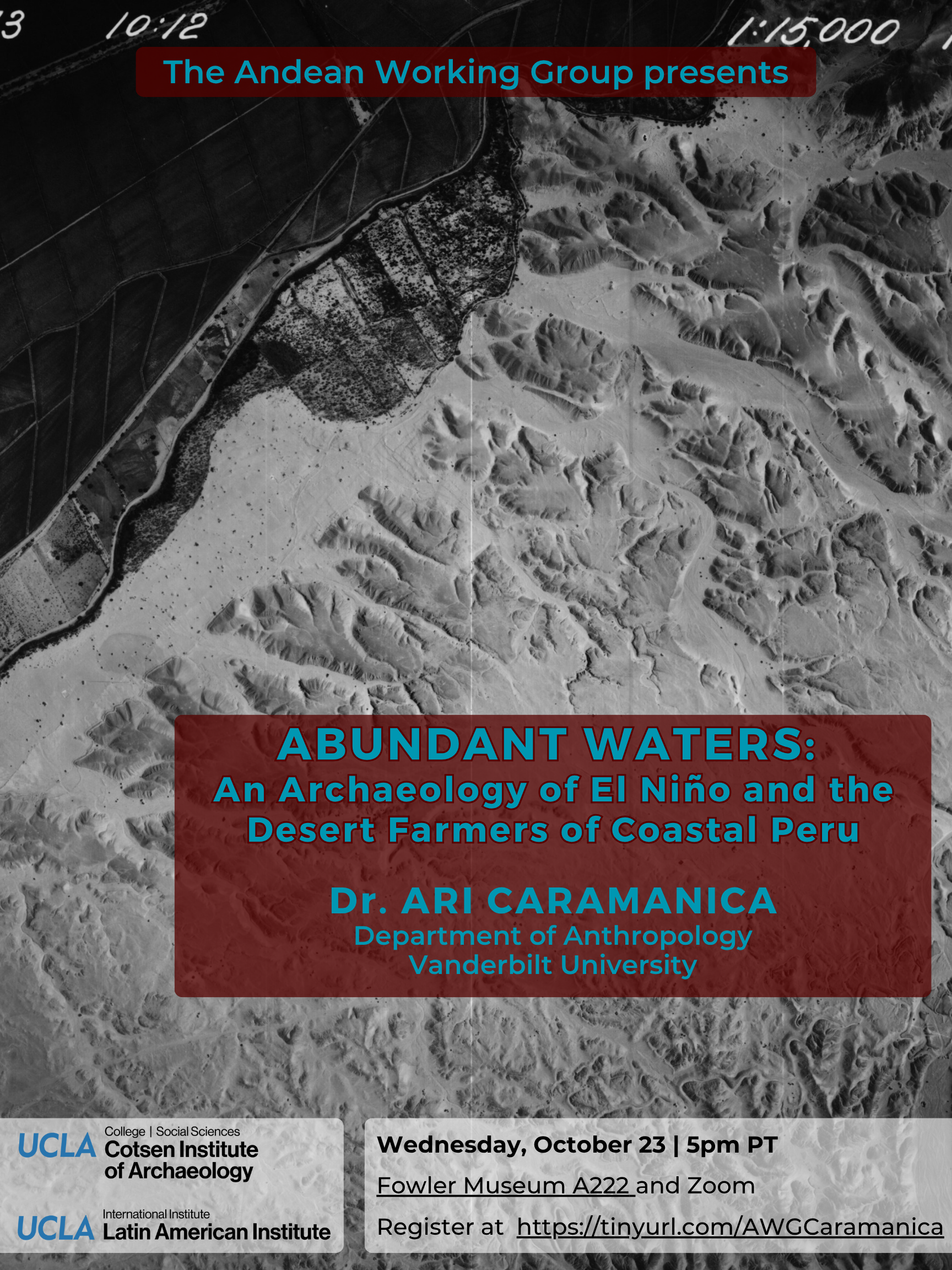
This event is co-sponsored by the UCLA Latin American Institute and the Cotsen Institute of Archaeology.
Contact Gabriel Silva Collins
Email gsilvacollins@g.ucla.edu
Phone
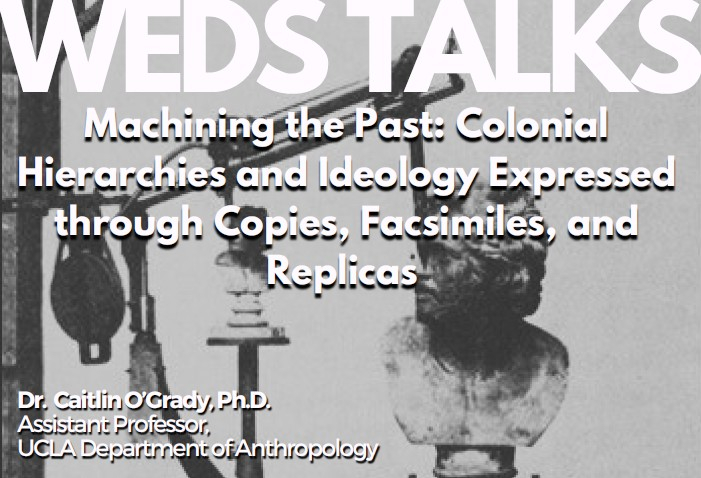
ABSTRACT: Plaster reproductions of Classical and Mesoamerican archaeological materials displayed at World’s Fairs or universal exhibitions and their connections to colonial perceptions of imperialism and empire.
BIO: Dr. Caitlin R. O’Grady is a trained conservator and conservation scientist specializing in analysis and preservation of archaeological materials. She is currently Assistant Professor in the University of California, Los Angeles (UCLA) Department of Anthropology and UCLA/Getty Program in the Conservation of Cultural Heritage. In this capacity, she teaches and advises undergraduate and graduate students in Anthropology and Conservation, as well as conducts research in the history of conservation and archaeology disciplines. Previously, she held a faculty position at the University College London’s Institute of Archaeology where she taught in the postgraduate conservation programs and managed the FTIR and Raman instrumentation in the Institute’s Wolfson Archaeological Science Laboratories.
Caitlin’s research interests include the disciplinary histories of conservation/conservation science and their intersection with that of archaeology, as well as the preservation and scientific analysis of ceramics, historic conservation materials, lime-plaster wall paintings, and mudbrick.
Contact Sumiji Takahashi
Email sutakahashi@ioa.ucla.edu
Phone 310-825-4169
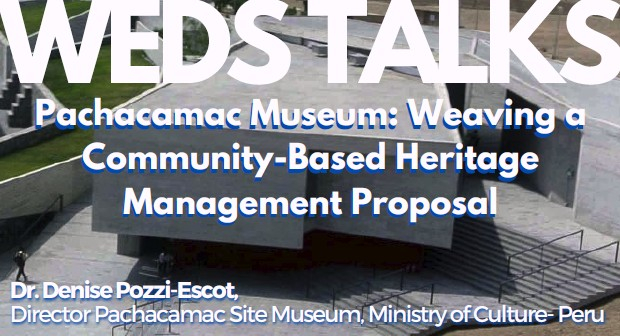
ABSTRACT: The Pachacamac Museum is located within the archaeological sanctuary of the same name, south of Lima and near the Pacific coast, in an area now integrated into the urban fabric of the capital. This sanctuary was one of the most important ceremonial centers of pre-Hispanic Peru and represents a heritage space of immense historical, cultural, and symbolic significance.
In a context shaped by cultural diversity and the presence of neighboring communities of varied origins, the museum understands heritage as a common bond that strengthens collective identity and fosters social integration. Guided by the principles of social museology, the institution prioritizes educational initiatives and affective strategies that place the community as a central partner in processes of research, conservation, and dissemination.
Through this approach, the Pachacamac Museum aspires to consolidate its role not only as custodian of a site of universal value but also as a dynamic space for dialogue, inclusion, and the collective construction of memory. In doing so, it contributes to a broader reflection on the social responsibilities of museums in contemporary Peru.
BIO: Denise Pozzi-Escot studied archaeology at the Universidad Nacional Mayor de San Marcos in Lima, Peru, and received a postgraduate degree at Paris 1 Panthéon-Sorbonne. She excavated at the Conchopata site in Ayacucho, Peru, and in Chincha. She also excavated on Corsica and at Pincevent in Paris. She is a board member for ICOM Perú. and a visiting professor in the master’s programs on South American archaeology at the Universidad Nacional de Trujillo (Peru) and Université de Rennes 1 (France). She is responsible for several community education and outreach projects, including one that empowers local women to become entrepreneurs and use Pachacamac iconography in their products.
Contact Sumiji Takahashi
Email sutakahashi@ioa.ucla.edu
Phone 310-825-4169
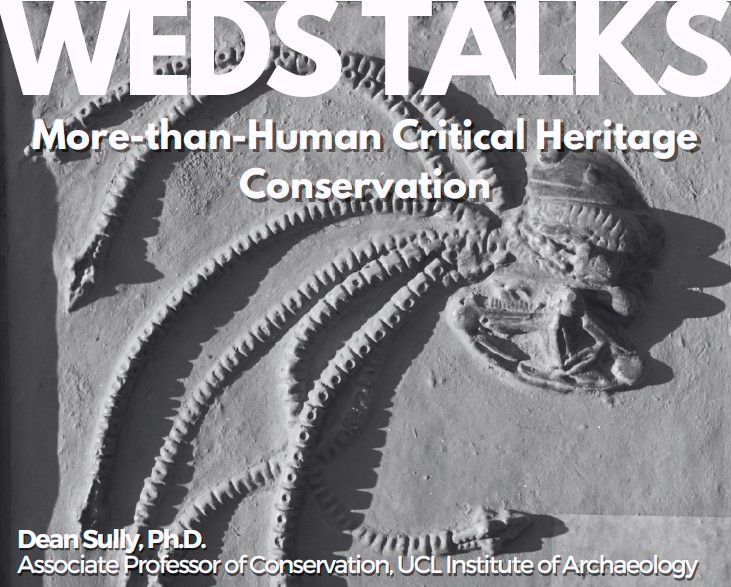
ABSTACT: This talk will present two speculative archaeological conservation projects currently underway at the Getty: Conservation Object as a Matter of Concern: “ ‘Ayn Ghazal in a Future World”, and ‘Museum Objects in This Future World’. The relevance of these playful projects will be discussed in relation to a current book project 'Beyond Just-Human: Critical Approaches to Heritage Conservation Practice'.
BIO: Dean's current research aims to re-situate heritage practice, from maintaining the metastable authenticity of heritage places and objects towards co-curating ecosociologically-constituted multispecies worlds. It looks to move beyond concepts that continue to privilege human agencies that sustain inequalities, towards a pluriversity of affective ecosociological potentialities of (post)human and nonhuman matter. This is addressed via transarticulating sympoietic framing that brings creative practice and heritage processes into flux through experimental science-art worldings. This enables a heritage conservation that addresses the social issues of the present in making more-liveable more-than-human worlds by making common cause with other human, non-human, and non-living actors.
Contact Sumiji Takahashi
Email sutakahashi@ioa.ucla.edu
Phone 310-825-4169
The Andean Working Group presents "Kubler in Cuzco: Shaping Architectural Modernity After the 1950 Earthquake" by Dr. Lucia Allais, Associate Professor in the Columbia University Graduate School of Architecture, Planning, and Preservation.
Registration is required for in-person and virtual participation. Register at tinyurl.com/AWGAllais
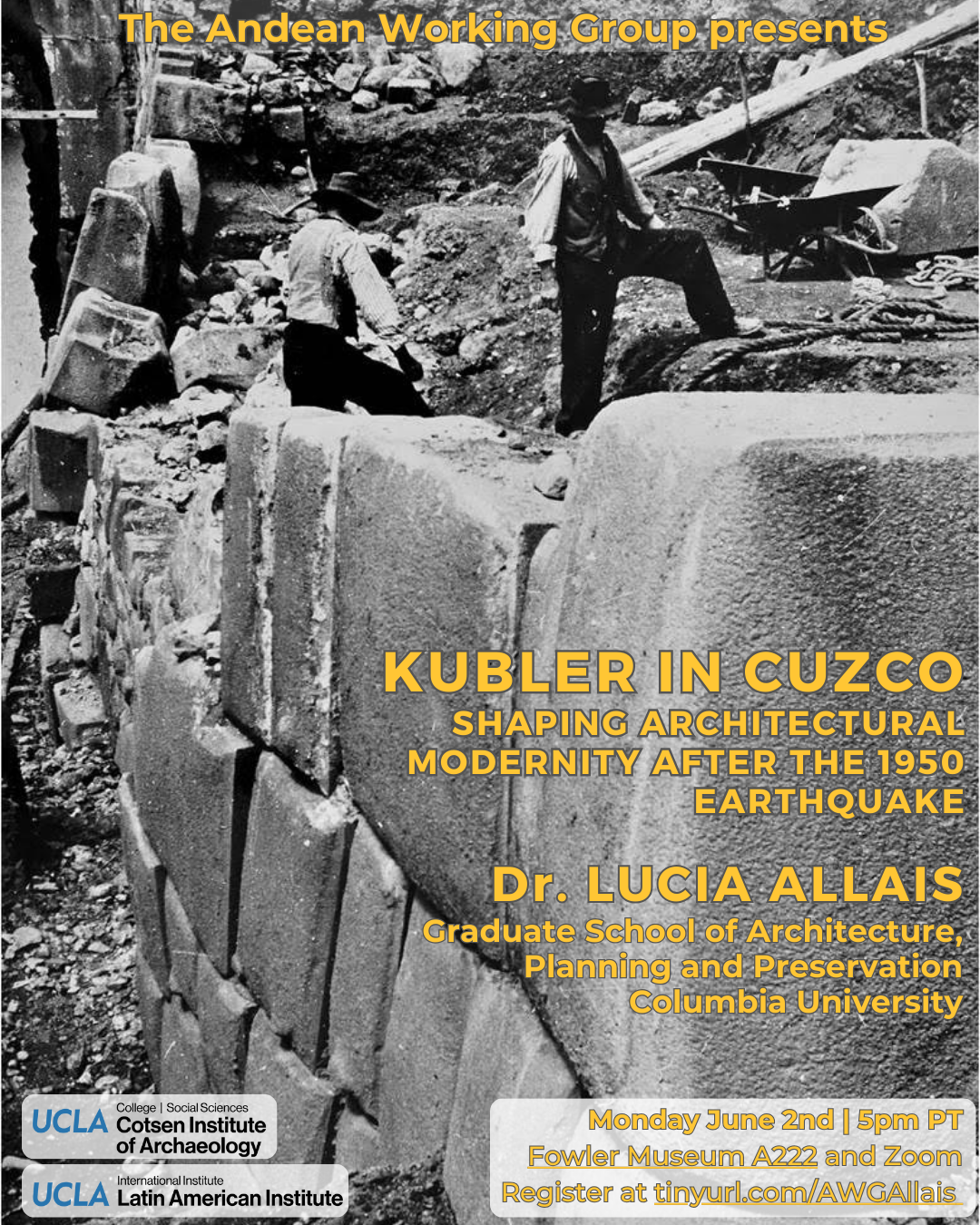
This event is co-sponsored by the UCLA Latin American Institute and the Cotsen Institute of Archaeology.
Download the flyer here.
Contact Alba Menéndez Pereda
Email albamenendez@ucla.edu
Phone
Spring 2025 Waystation Workshop
Dr. Emiliano Ricardo Melgar Tisoc
Researcher, Templo Mayor Museum, Instituto National de Antropología y Historia (INAH)
Using approximately 40 lithic artifacts recently accepted into the Waystation’s voluntary return program, Emiliano Melgar will demonstrate analytic methods through a first traceological examination to determine their ancient Mexican cultural affiliation and technological styles. He will discuss different techniques of identifying raw materials and manufacturing traces, what information can be obtained from them, the accuracy and limitations of these techniques, and the importance of reference assemblages for comparative purposes.
Register for the workshop here
 Dr Melgar earned a BA in Archaeology from the National School of Anthropology and History (ENAH) in Mexico and an MA and Ph.D. in Anthropology from National Autonomous University of Mexico (UNAM). Since 2004 he has been a full-time researcher at the Templo Mayor Museum. Dr Melgar’research has been awarded the 2010 Alfonso Caso Award for best bachelor thesis in archaeology, the 2011 Teotihuacan Award for best essay on the materials of that city, and the 2019 Award of the Mexican Academy of Sciences for the best young researcher in the Mexican Humanities. He has written five books and more than 80 articles for domestic and foreign publications. His new book, “Lapidary Objects from the Great Temple: Styles and Technological Traditions”, received the Honorable Mention in the 2024 INAH Prize for the best archaeological research in Mexico.
Dr Melgar earned a BA in Archaeology from the National School of Anthropology and History (ENAH) in Mexico and an MA and Ph.D. in Anthropology from National Autonomous University of Mexico (UNAM). Since 2004 he has been a full-time researcher at the Templo Mayor Museum. Dr Melgar’research has been awarded the 2010 Alfonso Caso Award for best bachelor thesis in archaeology, the 2011 Teotihuacan Award for best essay on the materials of that city, and the 2019 Award of the Mexican Academy of Sciences for the best young researcher in the Mexican Humanities. He has written five books and more than 80 articles for domestic and foreign publications. His new book, “Lapidary Objects from the Great Temple: Styles and Technological Traditions”, received the Honorable Mention in the 2024 INAH Prize for the best archaeological research in Mexico.
Contact Lyssa Stapleton
Email waystation@ioa.ucla.edu
Phone
- 1 of 50
- next ›



